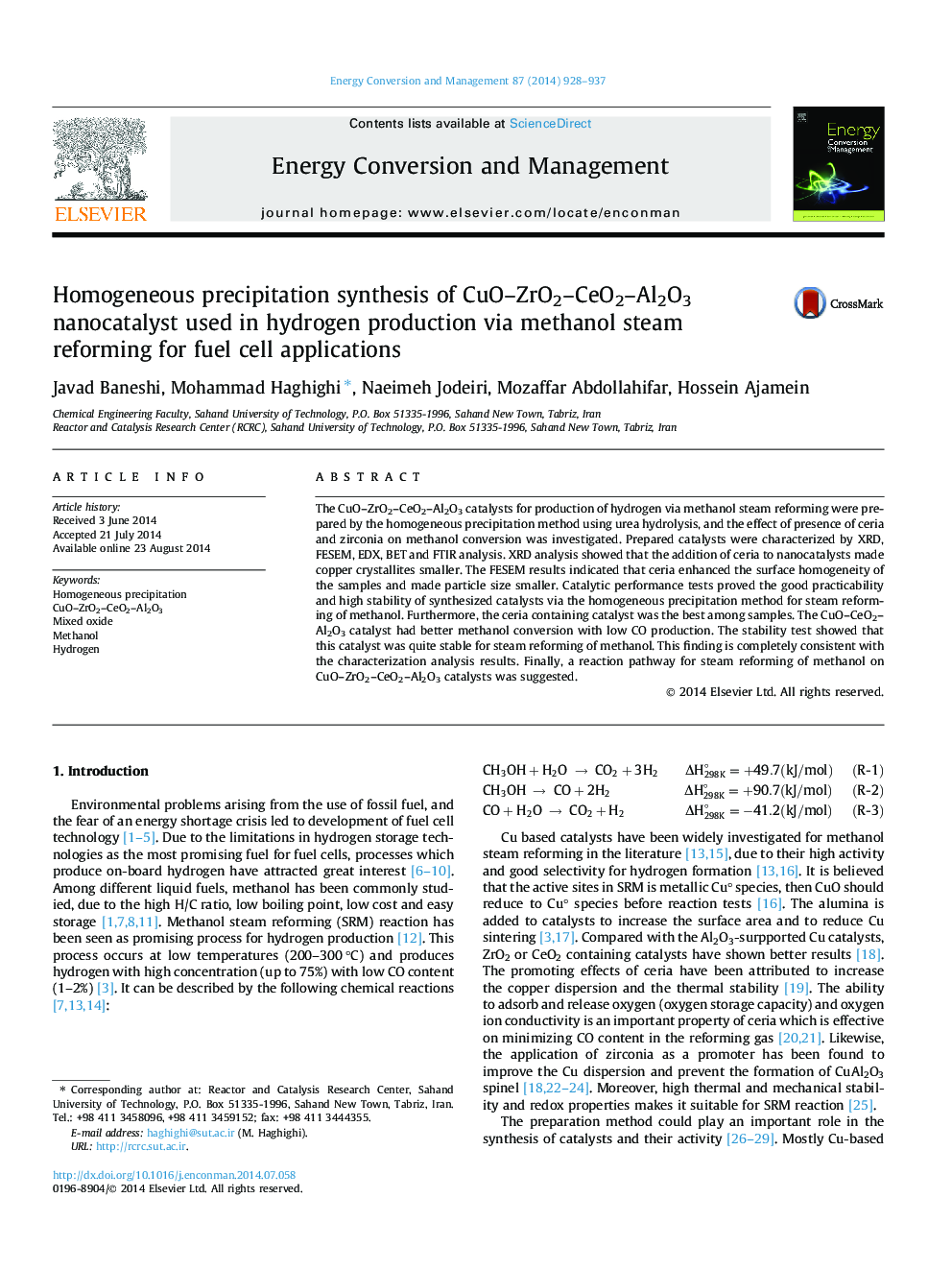| Article ID | Journal | Published Year | Pages | File Type |
|---|---|---|---|---|
| 760722 | Energy Conversion and Management | 2014 | 10 Pages |
•Homogeneous precipitation synthesis of CuO–ZrO2–CeO2–Al2O3 nanocatalyst.•Enhanced effect of ceria–zirconia on properties and performance of the nanocatalyst.•Conversion of 100% at 240 °C with no CO production over nanocatalyst.•High time on stream of CuO–ZrO2–CeO2–Al2O3 nanocatalyst in methanol steam reforming.•Suggested a reaction pathway methanol steam reforming over nanocatalyst.
The CuO–ZrO2–CeO2–Al2O3 catalysts for production of hydrogen via methanol steam reforming were prepared by the homogeneous precipitation method using urea hydrolysis, and the effect of presence of ceria and zirconia on methanol conversion was investigated. Prepared catalysts were characterized by XRD, FESEM, EDX, BET and FTIR analysis. XRD analysis showed that the addition of ceria to nanocatalysts made copper crystallites smaller. The FESEM results indicated that ceria enhanced the surface homogeneity of the samples and made particle size smaller. Catalytic performance tests proved the good practicability and high stability of synthesized catalysts via the homogeneous precipitation method for steam reforming of methanol. Furthermore, the ceria containing catalyst was the best among samples. The CuO–CeO2–Al2O3 catalyst had better methanol conversion with low CO production. The stability test showed that this catalyst was quite stable for steam reforming of methanol. This finding is completely consistent with the characterization analysis results. Finally, a reaction pathway for steam reforming of methanol on CuO–ZrO2–CeO2–Al2O3 catalysts was suggested.
Graphical abstractIn this study, the effect of ceria and/or zirconia on the performance of CuO–Al2O3 nanocatalysts in the steam reforming of methanol was investigated. CuO–ZrO2–Al2O3, CuO–CeO2–Al2O3 and CuO–ZrO2–CeO2–Al2O3 nanocatalysts were synthesized via homogeneous precipitation method. It was found out that ceria addition leads to better dispersion of Cu, smaller particle size and more uniform distribution which leads to better methanol conversion, low CO production and high stability. The methanol conversion over CuO–CeO2–Al2O3 reaches to 100% at 240 °C while no CO was detected in this temperature.Figure optionsDownload full-size imageDownload as PowerPoint slide
